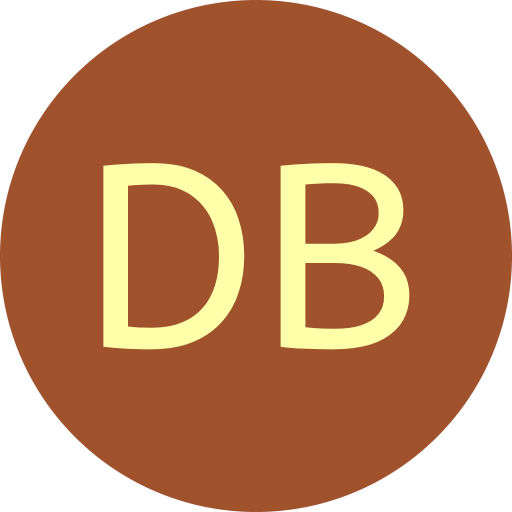| Recursive Construction | Output | ||||||||
|
The most important recursive approach applies the inverse of Lempel's D-morphism (Lempel's lift) [Lem70]; given a DB sequence of order $n$ it constructs a DB sequence of order $n+1$. This approach is described in detail below and it has been generalized for $k=2$ [Gam83]. There is also a doubly recursive approach [MEP96]; given a DB sequence of order $n$ it constructs a DB sequence of order $2n$. Knuth provides a nice treatment of both approaches [Knu11, pp.304-305]. When $k=2$, they are combined to obtain an efficiently decodable DB sequence that can be ranked in $O(n \log n)$ steps; the $r$-th bit in the sequence can be found by doing $O(n \log n)$ simple operations on $n$-bit numbers [Knu11, p.317, ex.97-99]. Lempel's lift has also been applied to construct orientable cycles and balanced cut-down DB sequences.
The concatenation-based construction by Ralston [Ral81] applies recursion when $n$ is composite.
Lempel's lift
Lempel's D-morphism [Lem70] maps a cyclic binary string $\alpha = a_1a_2\cdots a_m$ to $\beta = b_1b_2\cdots b_{m}$ where each $b_i = a_{i} \oplus a_{i+1}$, noting $b_m = a_m \oplus a_1$. Both $\alpha$ and its complement $\overline{\alpha}$ map to the same $\beta$. The inverse of this operation, denoted $\mathcal{L}(\beta)$, is known as Lempel's lift. When the weight (number of 1s) of $\beta$ is even $\mathcal{L}(\beta)$ contains two strings (complements); when the weight is odd, it contains one string rotationally equivalent to its complement.
When $\beta = b_1b_2\cdots b_m$ is a universal cycle (UC) of order $n$ for a set $\mathbf{S}$ consisting of $m$ binary strings then:
- If $\beta$ has even weight, then $\mathcal{L}(\beta) = \{\alpha_0, \alpha_1\}$ consisting of two disjoint UCs of order $n{+}1$ and length $m$.
Each $\alpha_i = a_1a_2\cdots a_m$ where $a_1 = i$ and
$a_j = a_{j-1} \oplus b_j$ for $j > 1$.
- If $\beta$ has odd weight, then $\mathcal{L}(\beta) = a_1a_2\cdots a_{2m}$ is a single UC of order $n{+}1$ with weight $m$ where $a_1 = 0$ and $a_j = a_{j-1} \oplus b_j$ for $j > 1$ allowing $b_{m+1}\cdots b_{2m} = \beta$.
A punctured DB sequence is a DB sequence with the unique substring $1^n$ replaced with $1^{n-1}$.
Consider the DB sequence $\beta_1 = 10111000$ of order $n=3$ with even weight. Then $$\mathcal{L}(\beta_1) = \{01101000, 10010111\}.$$
Consider the punctured DB sequence $\beta_2 = $ 1011000 with odd weight. Then $$\mathcal{L}(\beta_2) = 01101111001000.$$
Let $\mathcal{D}$ be a DB sequence of order $n>1$. Since the weight (number of 1s) of $\mathcal{D}$ is even, let $\mathcal{L}(\mathcal{D}) = \{\alpha_0, \alpha_1\}.$ The UCs $\alpha_0$ and $\alpha_1$ correspond to two edge-disjoint cycles in the underlying DB graph of order $n$ and they both contain the length-$n$ substring (vertex) $1010\cdots$. They can be joined together via this substring (vertex) to obtain a DB sequence of order $n{+}1$.
|
Consider the DB sequence $\mathcal{D} = 10111000$ of order $n=3$ where $\mathcal{L}(\mathcal{D}) = \{01101000, 10010111\}.$
The DB graph of order $n=3$ on the right highlights the two edge-disjoint cycles 01101000 and 10010111. The two cycles share the common vertex 101 (among others). After rotating the substrings $101$ to the front of each cycle, they can be joined together to obtain $$\mathbf{101}00001~\mathbf{101}11100,$$ which is a DB sequence of order $n{+}1=4$.
| |
Let $\mathcal{D}$ be a punctured DB sequence of order $n > 1$. Then $\mathcal{D}$ has odd weight and $\mathcal{L}(\mathcal{D})$ misses only the two alternating substrings $1010\cdots$ and $0101\cdots$ which appear in the cycle 01. The two cycles can be joined to obtain a DB sequence of order $n{+}1$.
|
Consider the punctured DB sequence $\mathcal{D} = $ 1011000 where
$\mathcal{L}(\mathcal{D}) = 01101111001000.$
The DB graph of order 3 on the right highlights the two edge-disjoint cycles 01101111001000 and 01. The two cycles share the common vertex 101. Joining these two cycles together yields $$\mathbf{101}11100100001~\mathbf{10},$$ which is a DB sequence of order $n{+}1=4$. | |
The two recursive constructions generalize naturally to alphabets of size $k>2$ [AA11,Knu11,NW22] where Lempel's lift will create up to $k$ cycles that can be joined together via alternating strings of length $n-1$. As an example for $k=3$ and $n=8$, possible joining strings are 0120120, 1201201, 2012012.
Given DB sequence $\mathcal{D} = 012120200021122210011102201$ of order $n=3$ with $k=3$, then
$\mathcal{L}(\mathcal{D}) = $ { 010100222212021011120110220, 121211000020102122201221001, 202022111101210200012002112 }
The first two cycles join on 201 to obtain:
201102200101002222120210111 201221001121211000020102122.
Joining this cycle with the third cycle on 012 yields the following DB sequence:
012210011212110000201021222011022001010022221202101112 012002112202022111101210200.
Given punctured DB sequence $\mathcal{D} =$ 01201022200202112212100011 of order $n=3$ with $k=3$, then
$\mathcal{L}(\mathcal{D}) = $ 010011021110020102020000122022002100022120212122220112112210222110121010111120.
Joining this with the small cycle 012 yields the following DB sequence:
012 012101011112001001102111002010202000012202200210002212021212222011211221022211.
- [AA11] A. Alhakim and M. Akinwande. A recursive construction of nonbinary de Bruijn sequences. Designs Codes and Cryptography, 60:155–169, 08 2011.
- [Ann97] F. Annexstein. Generating de Bruijn sequences: an efficient implementation. IEEE Transactions on Computers, 46(2):198–200, 1997.
- [CPKS99] T. Chang, B. Park, Y. H. Kim, and I. Song. An efficient implementation of the D-homomorphism for generation of de Bruijn sequences. IEEE Transactions on Information Theory, 45(4):1280–1283, 1999.
- [Gam83] R. Games. A generalized recursive construction for de Bruijn sequences. IEEE Transactions on Information Theory, 29(6):843–850, 1983.
- [Knu11] D. E. Knuth. The Art of Computer Programming. Vol. 4A. Combinatorial Algo- rithms. Part 1. Addison-Wesley, Upper Saddle River, NJ, 2011.
- [MEP96] C. Mitchell, T. Etzion, and K. Paterson. A method for constructing decodable de Bruijn sequences. IEEE Transactions on Information Theory, 42(5):1472–1478, 1996.
- [Lem70] A. Lempel. On a homomorphism of the de Bruijn graph and its applications to the design of feedback shift registers. IEEE Transactions on Computers, C-19(12):1204–1209, 1970.
- [Ral81] A. Ralston. A new memoryless algorithm for de Bruijn sequences. J. Algorithms, 2(1):50–62, 1981.
 De Bruijn Sequence and Universal Cycle Constructions
De Bruijn Sequence and Universal Cycle Constructions